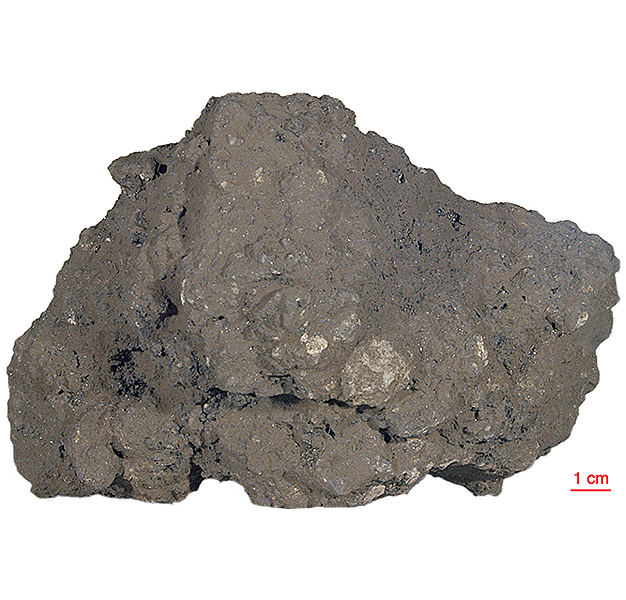
Fact sheet
15498 was collected from the soil at the base of the boulder where 15485 and 15499 were sampled. It is a coherent brown glass matrix breccia with abundant clasts of mare basalt. It is clast-rich, the clasts all being mare basalts. The sample is also cut by fissures filled with vesicular glass. Much of the groundmass is made up of mineral fragments, apparently from mare basalt. 15498 is one of the most iron rich breccias from Apollo 15. Rotation 1 shows a portion of a variolitic mare basalt clast and a pale brown fragment of glass. Rotation 2 focuses on a larger mare basalt clast.
The sample weighed 2340 grams before analysis and has not been dated.
Further details of this and other Apollo samples are here: http://curator.jsc.nasa.gov/lunar/
The Apollo 15 landing site was in the Apennine Highlands, and close to Hadley Rille — a long, narrow winding valley. Approximately 76 kg of lunar material, including soil, rock, core-tube and deep-core samples, were returned to Earth.
This mission was the first flight of the Lunar Roving Vehicle which allowed the astronauts to venture further from the Lunar Module than in previous missions. During three periods of extravehicular activity, or EVA, on July 31st, and August 1st and 2nd, Scott and Irwin completed a record 18 hours, 37 minutes of exploration, travelling 17.5 miles, in the first car that humans had ever driven on the Moon.
Apollo 15 was launched on 26 July 1971.






